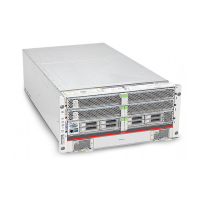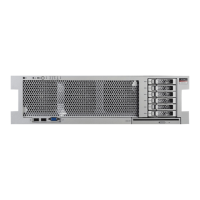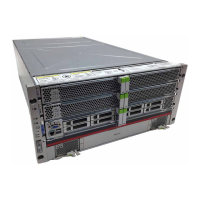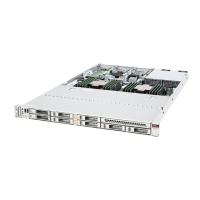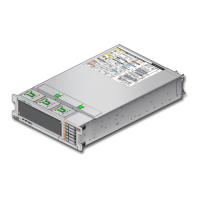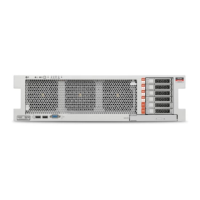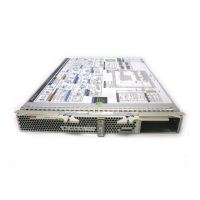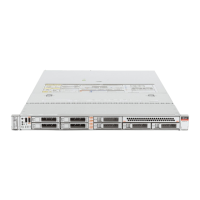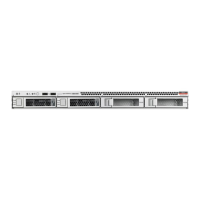Prepare a PCIe Card For Removal
# ldm rm-io /SYS/CMIOU9/PCIE2/IOVFC.PF0.VF0 ldg4
# ldm rm-io /SYS/CMIOU9/PCIE2/IOVFC.PF0.VF1 ldg4
# ldm rm-io /SYS/CMIOU9/PCIE2/IOVFC.PF0.VF2 ldg4
# ldm rm-io /SYS/CMIOU9/PCIE2/IOVFC.PF0.VF3 ldg4
5.
Verify that the virtual functions have been removed from the I/O domains.
# ldm ls-io /SYS/CMIOU9/PCIE2
NAME TYPE BUS DOMAIN STATUS
---- ---- --- ------ ------
/SYS/CMIOU9/PCIE2 PCIE pci_45 primary OCC
/SYS/CMIOU9/PCIE2/IOVFC.PF0 PF pci_45 primary
/SYS/CMIOU9/PCIE2/IOVFC.PF1 PF pci_45 primary
/SYS/CMIOU9/PCIE2/IOVFC.PF0.VF0 VF pci_45
/SYS/CMIOU9/PCIE2/IOVFC.PF0.VF1 VF pci_45
/SYS/CMIOU9/PCIE2/IOVFC.PF0.VF2 VF pci_45
/SYS/CMIOU9/PCIE2/IOVFC.PF0.VF3 VF pci_45
In this example, the virtual functions listed under the TYPE column now display no domain
name.
6.
If the previous command fails, the I/O domain software is keeping the virtual
functions busy. In this case, stop the I/O domain and remove each virtual
function.
# ldm stop ldg4
LDom ldg4 stopped
# ldm rm-io /SYS/CMIOU9/PCIE2/IOVFC.PF0.VF0 ldg4
# ldm rm-io /SYS/CMIOU9/PCIE2/IOVFC.PF0.VF1 ldg4
# ldm rm-io /SYS/CMIOU9/PCIE2/IOVFC.PF0.VF2 ldg4
# ldm rm-io /SYS/CMIOU9/PCIE2/IOVFC.PF0.VF3 ldg4
7.
Back up the virtual function properties.
If the replacement PCIe card is the same type and model as the original card, and if virtual
functions were created from physical functions on that card, save the properties of any virtual
function instance for the PCIe card. You can use the file you create to reproduce the original
configuration on the new card.
# ldm ls-io -l slot-name>file-name
where:
■
slot-name is a format similar to /SYS/CMIOU9/PCIE2
■
file-name is a format similar to /var/tmp/vf_config.txt
Servicing PCIe Cards 153
